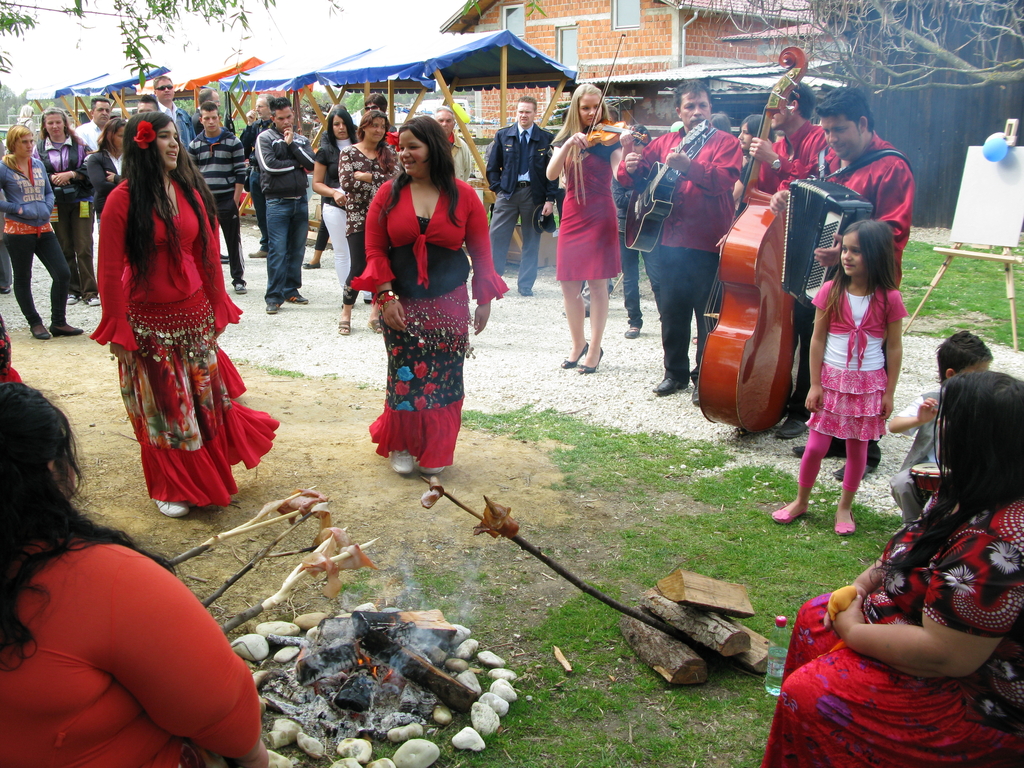Opis stanja
Kultura Romov ima indijsko poreklo. Vse do danes Romi ohranjajo številne elementov, ki govorijo o njihovem kulturnem in etničnem poreklu oziroma identiteti. Upoštevajoč zgodovinska dejstva tega naroda lahko rečemo, da se je ta oblika kulture pokazala kot zelo funkcionalna. Ta kultura je pretrpela vplive mnogih neprimerljivo razvitejših kultur. V romski kulturi so v ospredju sreča, ljubezen in svoboda – to so njihove življenjske vrednote. Romi so bili v mnogih sredinah nosilci glasbene kulture. Bili so (in so še) poznavalci zdravilnih zelišč, narodne medicine in veterine. Romi so ustvarjalen in folklorno dejaven naroda, v katerem se prepletajo indijski, orientalski in pogansko-slovenski elementi. Posebnost Romov je duh tolerance, ki predstavlja rezultat romske kulture.

Foto: delo.si. Dobrih 90.000 evrov za romske kulturne projekte. [online]. Dostopno na: http://www.delo.si/novice/politika/dobrih-90-000-evrov-za-romske-kulturne-projekte.html
Močan vpliv na romske navade in običaje so imeli nomadski način življenja, izoliranost in kulturni vplivi družb, v katerih so se zadrževali. Za Rome je značilna vera v posmrtno življenje. Izoblikovali so številne rituale, ki imajo predvsem zaščitno in varovalno funkcijo. Najpomembnejši so običaji, ki se vežejo na rojstvo, poroko in smrt. Vsi Romi muslimanske in judovske vere od nekdaj opravljajo sunet oziroma obrezovanje moških potomcev. Po navadi to opravijo pri otrocih v starosti od treh do sedmih let. Ta običaj so včasih opravljali brivci, sedaj pa poteka v klinikah pod skrbnim nadzorom zdravnikov.
Književnost Romov v Sloveniji se je začela pod okriljem Romani Uniona (romske zveze) iz Murske Sobote, s prvim literarnim romskim zbornikom Lunin prstan, avtorjev Jožeka Horvata Muca in Jožeta Livijena.
Viri:
- BRIZANI, I. T. 2000. Le ostanite Romi gredo! Celovec: Mohorjeva, 2000. 94 str. ISBN 3-85013-797-X
- Kultura. Portal projekta Romska hiša/Romano Kher [online]. Dostopno na: http://www.romsvet.si/sl-si/romi-v-sloveniji/kultura-in-mediji
V Sloveniji so bili indijski nomadi razdeljeni na tri skupine in sestavljajo prav toliko narečij. To so manjše skupine, izvirajo pa iz več evropskih dežel, kar je tudi vzrok,da so nastale tri narečja.
Preberi več